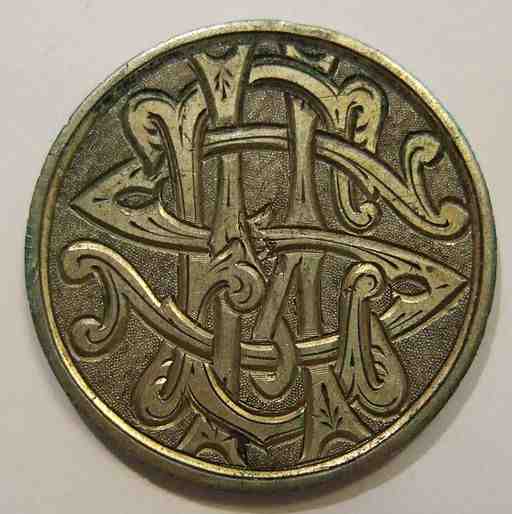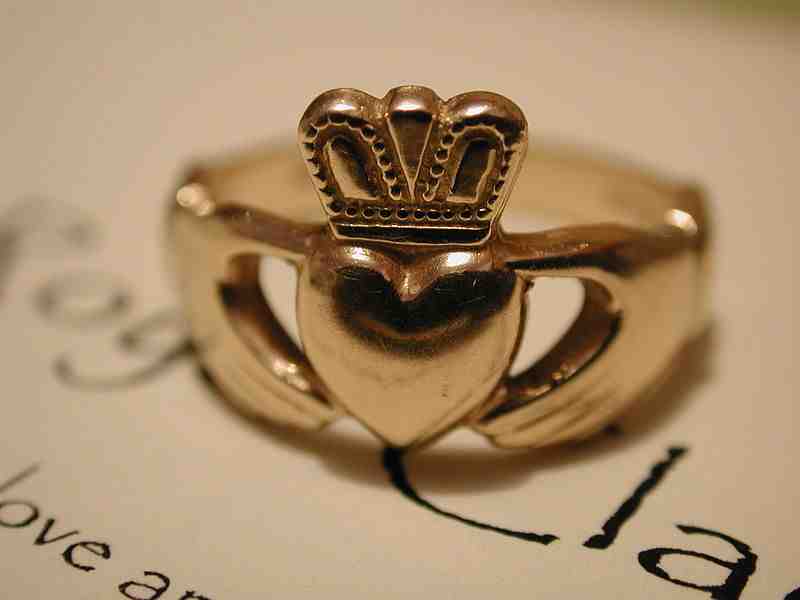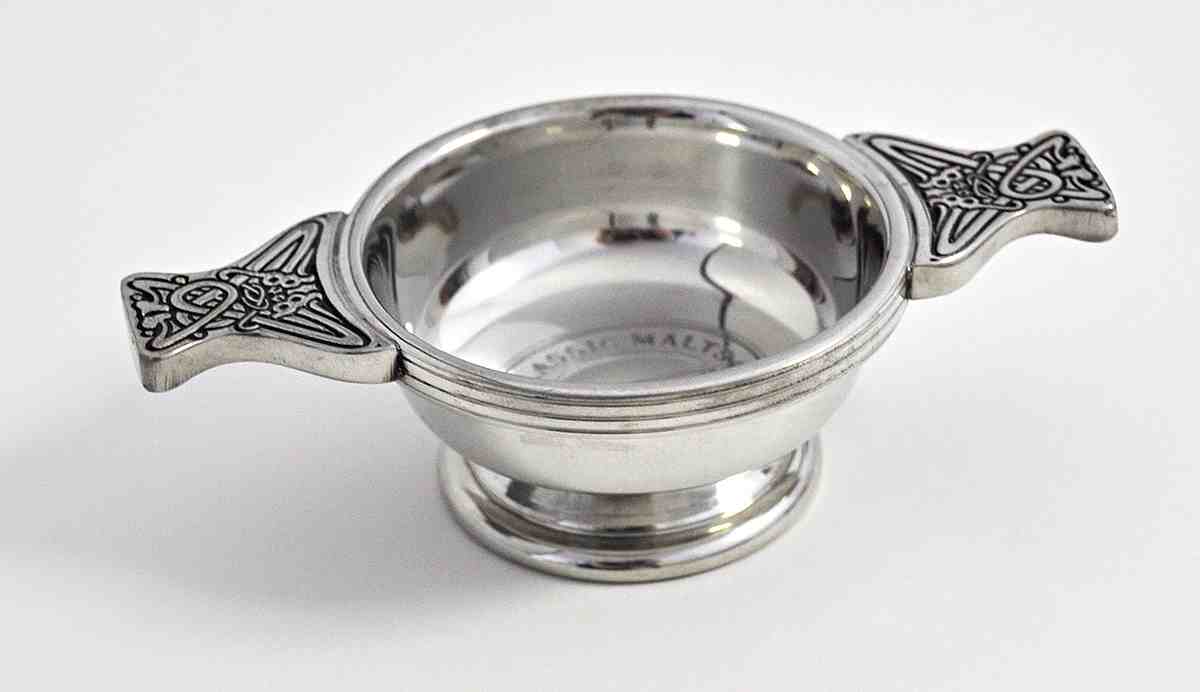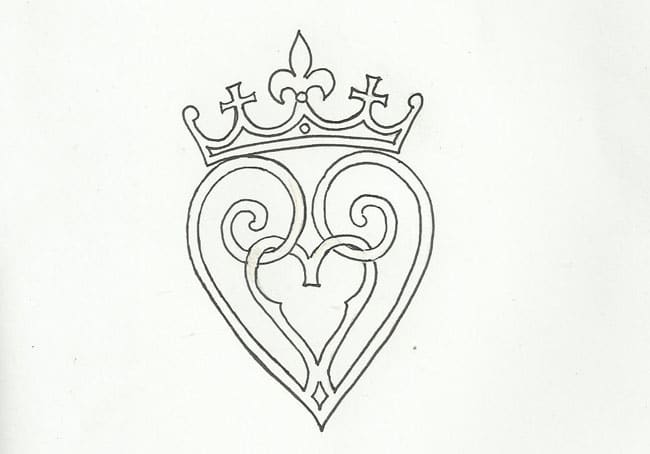In matters of love, we often turn back to tradition. Those who cherish their heritage often take refuge in old symbols of the past. Love Tokens have been a common part of courtship for a very long time. There have been many different and varied gifts for declaring your attentions. Here are a few traditional examples:

The Token: The Love Spoon
Country of Origin: Wales
History: Love Spoons or Wedding spoons are hand carved from a solid block of wood. Traditionally they were given by a young man to the lady he wished to court. They became popular in the 17th Century. These would have traditionally been used as an ordinary spoon. These days they can be given as decorative gifts.
Meaning: It is believed to have originated from the simple gift of a wooden spoon meant to symbolize a wish to house and feed, i.e. support the object of one’s affection. It also was representative of the young man’s skill as a carver. Over the years, the designs grew more intricate. These are a few common symbols that show up in love spoons:
Heart: Love
Cross: Faith
Horse shoe: Luck
Key and lock: Security
Wheel: Support
Caged Balls: The desired number of children
Bonus fact: The Welsh have their own version of Valentine’s Day that takes place in January called St. Dwynwen’s Day or Welsh Valentine’s Day.

The love Token: Engraved Coin
Country of Origin: England
History: This is a tradition which has existed for many years and is not just confined to England. There are only two prerequisites: that the coin be genuine (i.e. in circulation as real money), and that it be hand carved. In case you were wondering at the legality of such a token, The Royal Mint offers a service which makes these love tokens to commission. Originally, the crafter rubbed flat one or both sides of the coin. Once this was done, one could begin carving, either initials, messages of love or even drawings. Flattening the coin however was not necessary; many examples exist of coins where the message has been carved around the year and design. Evidence of love tokens exist from the 13th century onward in England. This tradition later moved to America.
Meaning: Coins have traditionally been held as symbols of luck for centuries. They have been used to commemorate birth, deaths, jubilees and weddings. Also because coins used to be worth a great deal more than they are today, the act of destroying something of monetary value especially if you were poor, would have spoken to the devotion felt for the receiver of such a gift.

The Love Token: The Claddagh Ring
Country of Origin: Ireland
History: This particular design was created in the 17th Century and originates from Claddagh, a small fishing village which no longer exists. The story goes like this: Richard Joyce, a silversmith, was kidnapped and sold into slavery by Algerian Corsairs in 1675 while sailing to the West Indies. He was then sold to a Goldsmith in Algeria from which he learned a great deal. Some years later, King William II demanded the release of any British captives from Algeria.
After a period of fourteen years, Joyce was eventually released taking with him a piece he had created during his years of confinement. When he returned to his home, he gave the ring to his sweetheart who had remained faithful to him. They married and presumably lived happily ever as the silversmith soon found great success with his design. It is not known how much of this story was true but his maker’s initials can be found on some of the earliest surviving Claddagh rings. Most recently, the Claddagh showed up in popular culture in Buffy The Vampire Slayer as a gift from the previously Irish Angel to Buffy.
Meaning: The heart represents love, the crown loyalty and the hands friendship. The way you wear it signals to others your relationship status. It typically goes as follows:
Heart pointed outward on right hand: Single and searching for love.
Heart pointed inward on right hand: In a relationship
Heart pointed outward on left hand: Engaged
Heart pointed inward on left hand: Married

The Love Token: Love Quaich
Country of Origin: Scotland
History: A Quaich is a drinking vessel, usually made with two handles on either side. One would usually drink whiskey or brandy from it. Traditionally made of hand crafted wood, it is more common to find ones made of pewter or silver now. A Love Quaich, however, would be inscribed with the Luckenbooth. Some have a glass bottom with a lock of hair encased inside so that a man might drink to his love. Now one can purchase decorative Quaichs to give as wedding gifts.
Meaning: The name literally translates as cup. There does not appear to be any particular meaning behind the giving of a Quaich as a gift apart from its part as a traditional cultural item.

The Love Token: The Luckenbooth
Country of Origin: Scotland
History: Similar in design to The Claddagh, the Luckenbooth is a brooch in the shape of a heart, often with a crown above it. It is also common for a design to show two intertwining hearts. Designs vary however in style and ostentatiousness but are usually made from silver. Silver is more affordable and considered lucky in Scotland. While similar designs existed previously, the modern version is not recorded as existing until the 17th century. According to legend, this type of brooch originated with Mary Queen of Scots either as a gift to her, or from her, to someone greatly admired.
Meaning: Luckenbooth means workshop or work booth dating back to early craft stools where jewelry might be purchased. They are given most often as a love token and worn as a form of protective charm.
Photo Credits: Wikimedia Commons photos published under Creative Commons
References and Further Reading:
History and Meanings: The history of the Welsh Love Spoon, www.adamking.co.uk
How to wear claddagh rings, www.claddaghring.com
Love Quaich, www.scotsconnection.com
Love Tokens: Where cold hard cash and romance meet, americanhistory.si.edu
Room, Andrew, Brewer’s Dictionary of Phrase and Fable (London: Cassel & Co, 2001)
St Dwynwen’s Day, www.visitwales.com
The Luckenbooth, www.scotclans.com
What is a Love Token?, www.lauriebenson.net
ARE YOU A ROMANCE FAN? FOLLOW THE SILVER PETTICOAT REVIEW:
 Our romance-themed entertainment site is on a mission to help you find the best period dramas, romance movies, TV shows, and books. Other topics include Jane Austen, Classic Hollywood, TV Couples, Fairy Tales, Romantic Living, Romanticism, and more. We’re damsels not in distress fighting for the all-new optimistic Romantic Revolution. Join us and subscribe. For more information, see our About, Old-Fashioned Romance 101, Modern Romanticism 101, and Romantic Living 101.
Our romance-themed entertainment site is on a mission to help you find the best period dramas, romance movies, TV shows, and books. Other topics include Jane Austen, Classic Hollywood, TV Couples, Fairy Tales, Romantic Living, Romanticism, and more. We’re damsels not in distress fighting for the all-new optimistic Romantic Revolution. Join us and subscribe. For more information, see our About, Old-Fashioned Romance 101, Modern Romanticism 101, and Romantic Living 101.
